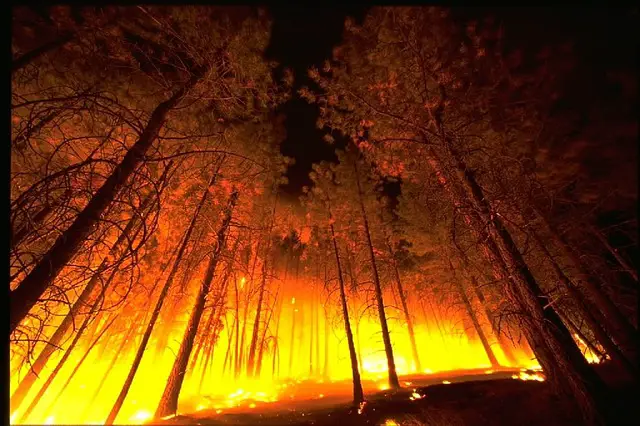 A wildfires or a bush fire is an uncontrollable fire outbreak that generally occurs in a countryside vegetation area. It also known as forest fire, grass fire, vegetation fire or brush fire according to different regions. They are usually distinguished by the cause of explosion, physical properties, percentage of flammable material present and weather.
A wildfires or a bush fire is an uncontrollable fire outbreak that generally occurs in a countryside vegetation area. It also known as forest fire, grass fire, vegetation fire or brush fire according to different regions. They are usually distinguished by the cause of explosion, physical properties, percentage of flammable material present and weather.
How is it different from other fires? Well that’s an interesting question to answer. A wildfire is huge in size —- runs at an astonishing velocity, keeps the latent quality to change directions, and even can jump roads and rivers depending on its speed. There are many more such thrilling facts about wildfires noted below:
-
Usually United States witness approximately 60,000-80,000 wildfires a year which, according to estimates, burn around 3 million to 10 million acres of land.
-
The worst wildfires till date reported was in the year 1825, which broke between Maine and New Brunswick, Canada, burning roughly 3 million acres of forest.
-
The most common target for wildfires is Australia because of their hot and arid climate.
-
It speed is recorded at usually 14 miles an hour which is somewhere like 23 kilometers an hour, eating up everything on its way in just few minutes.
-
In layman’s language, a wildfires starts in the presence of three elements, oxygen, fuel and heat sources. The heat source can be anything, from lighted cigarettes to hot winds.
-
Firefighters usually use methods like water dousing or spraying fire retardants to fight fires. Processes like controlled burning and clearing vegetation are also used.
-
Strangely, wildfires also have some valuable properties; there are certain plants species which depend on the effects of such fire break for reproduction as well as growth.
-
Contradicting beliefs, most animals have the ability to skip wildfires. For example, large mammals survive during wildfires. However, chances are of them getting injured relatively is there.
-
Another interesting fact is that the animals which get affected most are insects and rodents.
-
Wildfires can also cause ‘fire tornadoes’ which are also commonly known as fire whirls. It’s a rare path but is considerably more destructive.
-
Around 80% of the willdfires are results of a human error sadly. Unattended campfires or even cigarettes are common reasons.
-
However, besides human error, other natural reasons for it striking out can be volcano, lightning, rockfalls-sparks, and spontaneous combustion.
-
The beetle of the subgenus Melanophils not only lives during wildfires but also uses its infrared radiation sensors to detect burning forests.
-
Wildfires are also a good way to return nutrients back to the soil. They additionally act as a disinfectant, removing unwanted material from the ecosystem and allowing sunlight to beam to the forest floor for new lives.
-
In fact, a species called lodgepole pines, linked closely to jackpines, release their cone seeds only when exposed to fire.
-
Originating from the word Greek fire, Wildfires currently refers to anything hefty or destructive forest fire.
-
Estimates point and they affect climate and have major impacts on atmospheric pollution.
-
The first evidence of wildfires is rhyniophytoid plant fossils which were found in Welsh Borders, preserved as charcoal, dating to the Silurian period.
-
Such fires tend to move uphill faster than downhill slope. And the sheer the slope would be, the faster the fire would spread.
-
A major wildfires often has the capacity to modify the local weather condition to an extent and get it to a front matching its own temperature, a condition called “its own weather.”
If you ever find yourself in a wildfires situation, simply called the helpline 911 or your local fire station. As a responsible citizen, never leave a fire or campfire unattended. Always extinguish even a cigarette with care, especially when camping. And take special care with lanterns, heaters, stoves or other fuel components. Make sure you are always easily approachable to water bodies.










Leave a Reply